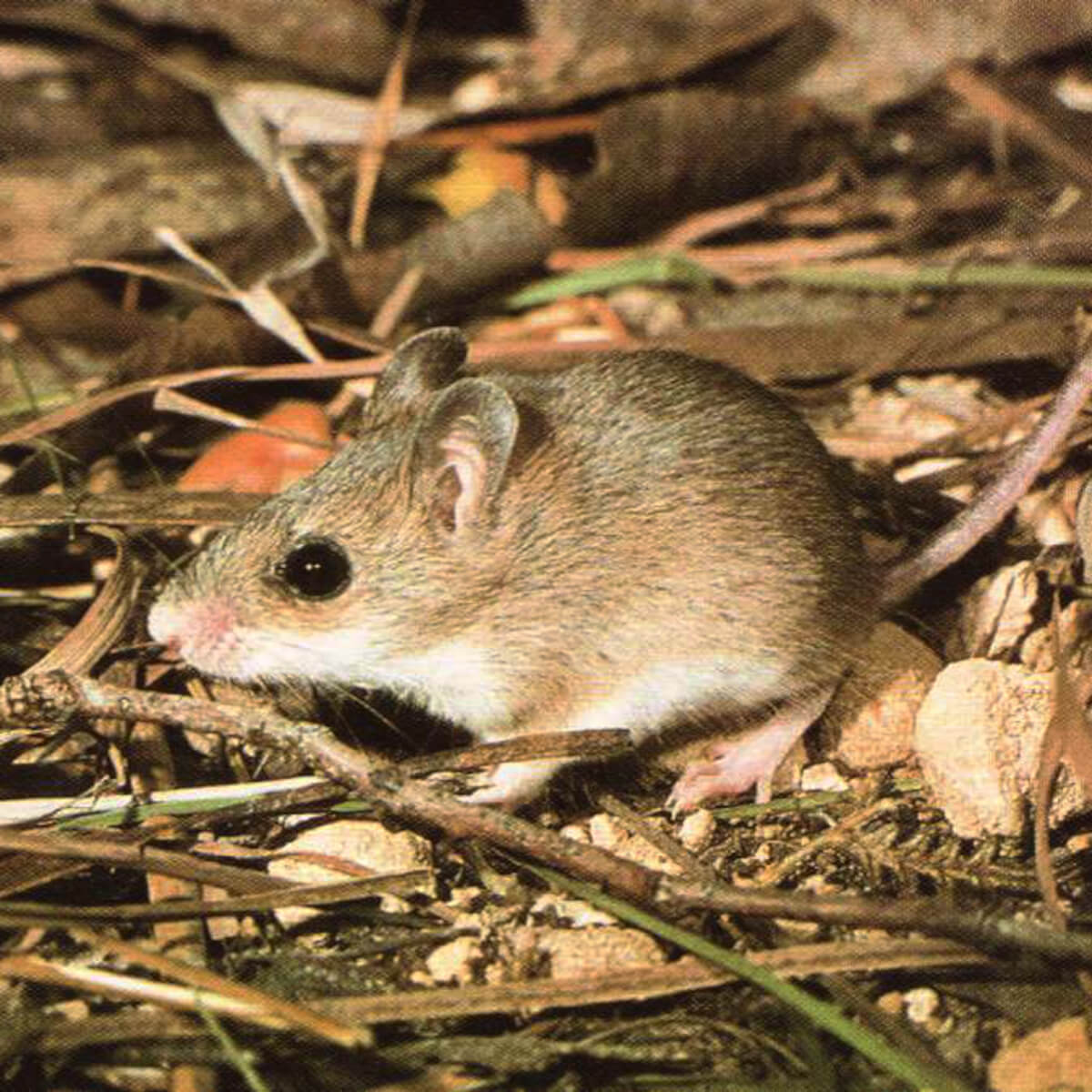Little Native Mouse (Kijbuk)
The little native mouse (Pseudomys delicatulus), also known as a delicate mouse, is a mice species native to Australia. Part of the Muridae subfamily, the mouse shares its “delicate” group with 4 other mice species. It is considered as Least Concern by the IUCN Red List of Threatened Species. As the name suggests, the little native mouse is a miniature type of rodent, which is hardly even considered a pest in domestic households.
Characteristics of the little native mouse
- Common name: Little native mouse, Delicate mouse
- Scientific name: Pseudomys delicatulus
- Colour: Light shades of brown
- Lifespan: 12-18 months in the wild
- Size: 55-75 mm, including the tail
- Weight: 6-15 g
- Bite risk: Highly unlikely
- Contamination risk: Very low
Behaviour and habitat
The little native mouse is the smallest native Australian mouse. It has short and slick fur with colours ranging between yellowish and greyish shades of brown, with chunks of white underneath and over its belly.
As for size, it can get up to 75 mm long and weighs about as much as three sheets of paper (15g) when fully grown! Adult “delicate” mice get to the breeding stage of their lives at the height of winter, in July and August.
Mice families of this size and origin prefer giving birth in grass-lined nesting chambers after the pregnancy is over. The gestation period can take anywhere between 27 and 32 days. Once born, mice babies have their ears folded and their eyes shut, but they achieve parental independence in about four weeks.
The little native mouse resides primarily in savannas. The species love areas with well-drained sandy soil where it can munch on the seeds of native grasses. It makes itself at home in burrows, under pieces of bark or inside hollow logs. On rare occasions, delicate mice might even move into mound-building termites’ real estate, too.
If you suspect mice have moved into your real estate, as well - be it a house, office or another establishment - do not hesitate to consult a professional pest control company for mice removal. Sure, you can try some fixes yourself, but why spend your precious time trying out internet solutions when somebody else can guarantee results?
Little native mouse vs antechinus
Does something make noises around your house? Do you suspect it’s a mouse? Because it might very well be something very different, yet look similar to the eye. Antechinuses are a genus of small carnivorous marsupials that resemble delicate mice.
However, just because they look the same, does not mean they are identical. To list the most obvious differences, here’s how to tell an antechinus from a little native mouse:
- Snout - The little native mouse has a round head and a circular-shaped nose, while an antechinus has a long, pointy snout with a triangular-shaped nose.
- Size - Antechinuses get about twice as big as little native mice do - up to 170mm.
- Characteristic differences - To set them apart from the little native mouse, antechinuses have small lobed ears with yellow limbs and bellies. They are also known to sport a pair of white glasses (white fur rings around their eyes).
- Smell - If it smells - it’s not an antechinus. These marsupials leave no lingering scent. Mice, on the other hand, create a musky smell.
- Droppings - Where mice scats have a granular shape and are black in colour, antechinuses leave behind produce in larger, cylindrical shapes.
Related: How to Tell the Difference Between Mice and Rats
